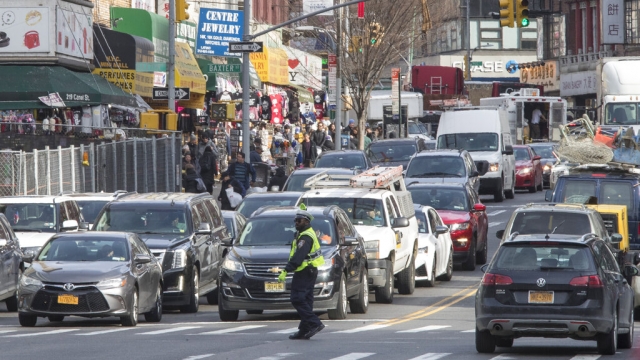In the heart of America's most congested city, traffic is to be expected. It's the reality of living or working in New York City, but has been exacerbated in the years since the end of the COVID-19 pandemic.
"Travel speeds in midtown Manhattan are five, maybe sometimes seven miles an hour," said Rachel Weinberger, the Director of Research Strategy for the Regional Plan Association. "Traffic came back, faster than transit has. Transit is still lagging."
Weinberger says it's a great time for change. In 2019, the New York state legislature passed a law saying the city had to implement congestion pricing. This June, they celebrated receiving final approval by the federal government.
"They did that environmental assessment, and that's the document the federal government has recently approved and now that that's been approved the program can move forward," Weinberger said.
SEE MORE: These cities have some of the worst traffic in the world
New York's Governor, Kathy Hochul, says this program is critical to the city's long term success.
"This is a significant milestone, bringing us closer to a future where New Yorkers have cleaner air, better public transit and less traffic clogging our streets," she said.
"Congestion pricing is the idea that we want to charge the users for the road for the use of the road, and specifically we want to charge users of the road for uses at a time or during times when traffic is more prevalent," said Glenn Furton, an assistant professor of economics at MSU Denver. "The reason for the entire conversation surrounding congestion pricing is based on the notion of a commons, and so this is basically the idea that there is open or free access to the use of the road to most users."
We've seen concepts of congestion pricing in this country on a corridor basis. One example is value lanes on highways. But for the first time, New York City is proposing this charge in a cordon area. Drivers will pay to enter the central business district, but costs have not yet been determined because they are still in the planning stages.
"It actually contains 51% of the region's jobs and it has the absolutely best configuration of transit access options," Weinberger said.
SEE MORE: How can commuting be good for your mental health?
The purpose of this is to change traffic patterns for some drivers and encourage other commuters to use alternative transportation methods.
"And that it will not only mitigate the traffic but the proceeds from congestion pricing are legally mandated to fund transit improvements so that the people who are choosing to no longer drive are also given a better alternative than the one that they have today," Weinberger said.
The enhancements will be felt by all commuters who use public transit; not just those who change how they travel.
"So the idea of congestion pricing really is to sort of spread the demand more evenly out across all of the other resources," Weinberger said.
Experts say all eyes are on New York City, including city leaders across the country, who are questioning how it will work, and if their plan could serve as a model for other cities looking to achieve a better standard of transit.
"I would worry [for] a smaller city that doesn't have a strong center, such a program could be harmful, but it really would have to be looked at on a case by case basis," Weinberger said.
Weinberger says change is never easy, but she expects the results of this plan to have a positive result on the city, and the greater perspective of transit options.
Trending stories at Scrippsnews.com





